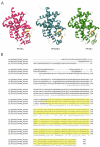New Insights into the Role of PPARγ in Skin Physiopathology
- PMID: 38927131
- PMCID: PMC11201613
- DOI: 10.3390/biom14060728
New Insights into the Role of PPARγ in Skin Physiopathology
Abstract
Peroxisome proliferator-activated receptor gamma (PPARγ) is a transcription factor expressed in many tissues, including skin, where it is essential for maintaining skin barrier permeability, regulating cell proliferation/differentiation, and modulating antioxidant and inflammatory responses upon ligand binding. Therefore, PPARγ activation has important implications for skin homeostasis. Over the past 20 years, with increasing interest in the role of PPARs in skin physiopathology, considerable effort has been devoted to the development of PPARγ ligands as a therapeutic option for skin inflammatory disorders. In addition, PPARγ also regulates sebocyte differentiation and lipid production, making it a potential target for inflammatory sebaceous disorders such as acne. A large number of studies suggest that PPARγ also acts as a skin tumor suppressor in both melanoma and non-melanoma skin cancers, but its role in tumorigenesis remains controversial. In this review, we have summarized the current state of research into the role of PPARγ in skin health and disease and how this may provide a starting point for the development of more potent and selective PPARγ ligands with a low toxicity profile, thereby reducing unwanted side effects.
Keywords: PPARs; inflammatory skin disease; lipids; sebaceous gland; skin cancer; skin physiology.
Conflict of interest statement
The authors declare no conflicts of interest.
Figures



References
Publication types
MeSH terms
Substances
LinkOut - more resources
Full Text Sources
Miscellaneous

